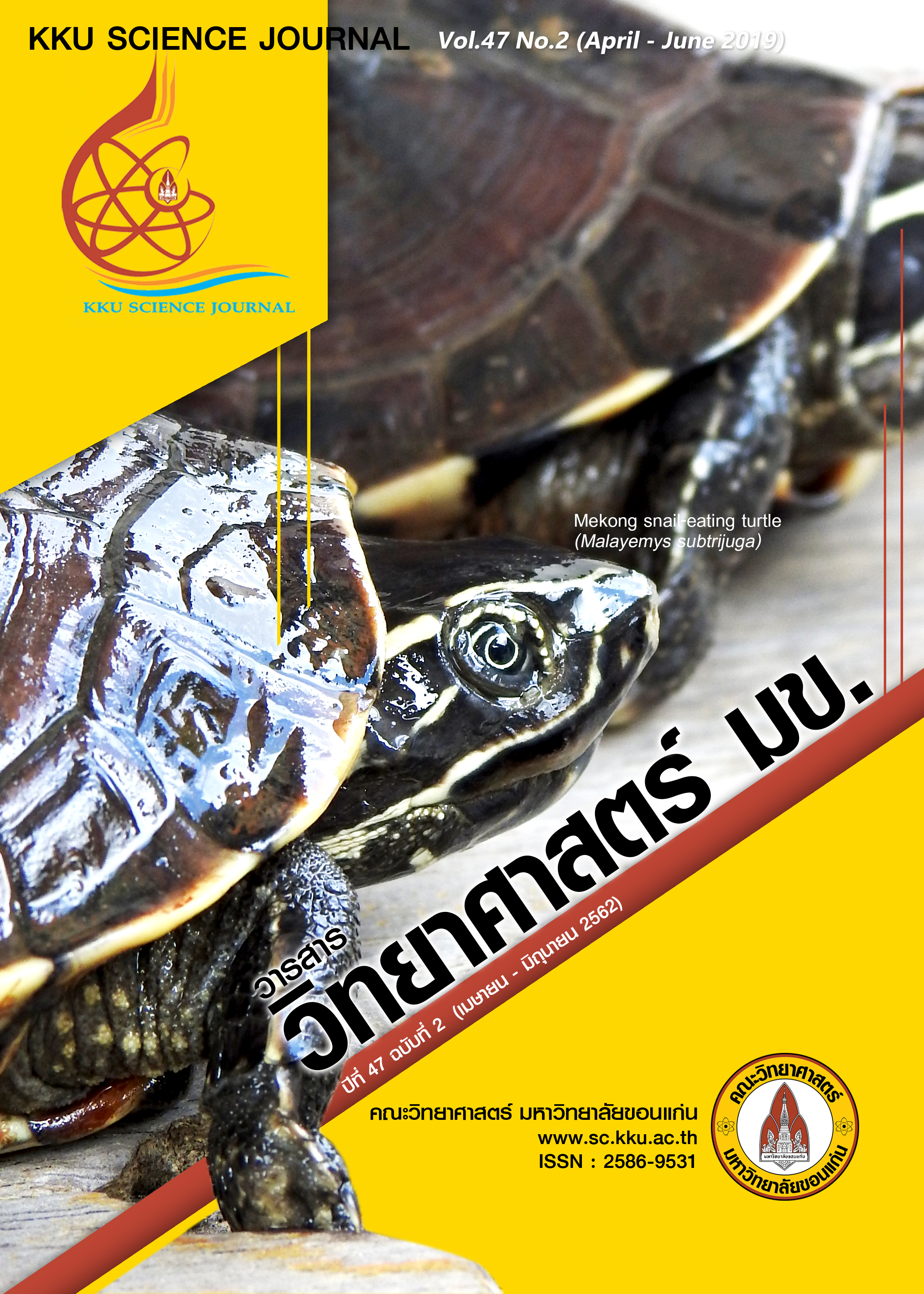The Latent Fingerprint Development by using Spore of Asplenium nidus L. and Ophioglossum pendulum L. on Different Surfaces
Main Article Content
Abstract
This research aimed for studying the development of the latent fingerprints through the use of fern spores belonging to the Bird’s nest fern (Asplenium nidus L.) and the Ribbon fern (Ophioglossum pendulum L.) and subsequent comparing their latent fingerprint development qualities on three different surfaces namely aluminum, glass and plastic. The latent fingerprint development qualities were examined by the fingerprint experts through the Automated Fingerprint Identification System (AFIS) in determining the average number of minutiae. The results revealed that the latent fingerprint development by using spores from both fern types could be applicable to those three surfaces. There’re no differences when comparing the average number of minutiae developed on the aluminum surface. The minutiae average numbers counting from the latent fingerprints developed by using spores from the Bird’s nest fern and the Ribbon fern were 63 and 76, respectively. The plastic surface also gave no differences in the minutiae average number; 42 for the Bird’s nest fern and 29 for the Ribbon fern. The quality of the latent fingerprints on the glass surfaces developed by the use of spores belonging to the Bird’s nest fern and the Ribbon fern was significantly different with the minutiae average number of 56 and 73 which is in the acceptable level of the Central Scientific Crime Detection Division.
Article Details

This work is licensed under a Creative Commons Attribution-NonCommercial-NoDerivatives 4.0 International License.


